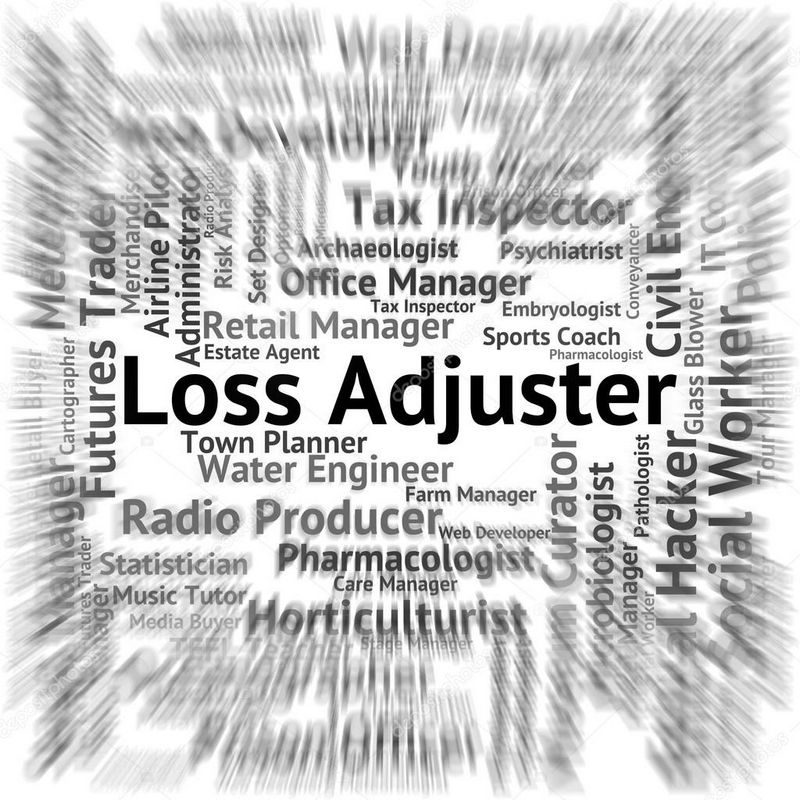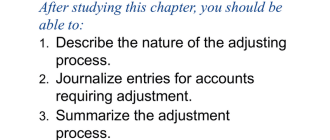
The Adjuster’s Role in Total Loss Determinations for Homes.
When it comes to determining the total loss of homes, the role of an adjuster is crucial. These professionals play a vital role in assessing the extent of the loss and providing accurate determinations. With their expertise in evaluating damages and estimating costs, adjusters ensure fair settlements for homeowners.
An adjuster’s primary responsibility is to thoroughly inspect the property and identify all damages caused by a covered peril. Whether it’s a fire, natural disaster, or other catastrophic events, the adjuster carefully assesses the destruction and documents it for insurance purposes. Their attention to detail and knowledge of construction and repair costs aids in determining the true extent of the loss.
Once the damages are documented, an adjuster uses their expertise to estimate the cost of repairs or rebuilding the home. They consider various factors such as labor, materials, and local market rates to provide accurate cost estimates. This information is essential for insurance carriers to determine the appropriate settlement amount.
Moreover, an adjuster also plays a crucial role in communicating with homeowners throughout the claims process. They explain the coverage, answer questions, and provide guidance on how the policy terms apply to their specific situation. Their expertise and professionalism ensure that homeowners understand the claims process and receive fair compensation for their loss.
Understanding the Adjuster’s Role in Total Loss Determinations
When a home is damaged or destroyed, it is the role of the adjuster to determine if the loss is a total loss. This is an important step in the claims process, as it will impact the amount of money that the policyholder is entitled to receive.
The adjuster’s role in total loss determinations is to assess the extent and cost of the damage to the home. This involves inspecting the property, reviewing any available documentation, and consulting with experts in order to make an accurate determination.
The adjuster will consider a variety of factors when making their determination, such as the age and condition of the home, the level of damage, and any local building codes or regulations that may affect the cost of repairs. They will also take into account any policy exclusions or limitations that may apply.
Once the adjuster has gathered all of the necessary information, they will calculate the total loss value of the home. This will include the cost of repairs or replacement, as well as any additional expenses that may be incurred, such as temporary housing or storage costs.
The adjuster’s role is not to determine the actual cash value of the home, but rather the total loss value. This means they will not consider factors such as market value or appreciation when making their determination.
It is important for policyholders to understand the adjuster’s role in total loss determinations, as it can have a significant impact on their claim. By working closely with the adjuster and providing any requested documentation or information, policyholders can help ensure a fair and accurate determination is made.
| Age and condition of the home |
| Extent and cost of the damage |
| Local building codes or regulations |
| Policy exclusions or limitations |
Factors Considered in Total Loss Determinations
When it comes to determining the total loss of a home, adjusters play a crucial role in evaluating various factors. These factors help in making accurate determinations and assessing the extent of the loss. Here are some key factors that adjusters consider:
| Property Damage | The adjuster assesses the overall property damage caused by the event. This includes evaluating the extent of structural damage, damage to personal belongings, and the cost of repairs or replacements. |
| Insurance Policy | Adjusters review the insurance policy to determine the coverage and exclusions for the specific loss event. This helps in understanding the limitations and guidelines for the total loss determination. |
| Market Value | They evaluate the market value of the property to determine if the cost of repair or replacement exceeds the property’s worth. If the repair cost is higher than the property’s value, it may lead to a total loss determination. |
| Local Building Codes | Adjusters consider the local building codes and regulations to determine if repairs or replacements can be done according to the requirements. If the property cannot be brought up to code, it may contribute to a total loss determination. |
| Extent of Damage | The adjuster examines the extent of damage to different components of the home, such as the foundation, walls, roof, electrical systems, plumbing, and HVAC. If the damage is severe and affects multiple essential systems, it can lead to a total loss determination. |
| Age and Condition of the Property | The age and condition of the property are evaluated to determine how feasible it is to bring it back to pre-loss condition. Older properties or properties in poor condition may be more likely to be deemed a total loss. |
By taking into account these factors, adjusters can make informed decisions regarding total loss determinations for homes. Their expertise and evaluation play a vital role in ensuring fair and accurate settlements for policyholders.
How Adjusters Assess Damage in Total Loss Situations
When determining the total loss of a home, adjusters play a critical role in assessing and evaluating the extent of the damage. It is their responsibility to thoroughly investigate the loss and determine if it exceeds a certain threshold that qualifies it as a total loss.
The first step in assessing the damage is to conduct a thorough inspection of the property. This involves examining the exterior and interior of the home, as well as any outbuildings or structures on the premises. Adjusters take note of any visible damage, including structural issues, water damage, fire damage, and any other factors that may contribute to the total loss determination.
During the inspection, adjusters may also take photographs and document their findings. These visual records serve as valuable evidence in the claims process and can help support the adjuster’s determination of a total loss.
In addition to the physical inspection, adjusters also review any relevant documentation and records related to the property. This may include insurance policies, repair estimates, and records of previous damage or repairs. By reviewing these documents, adjusters can gain a better understanding of the property’s history and any pre-existing conditions that may impact the total loss determination.
After thoroughly assessing the damage and reviewing all relevant information, adjusters use their expertise and knowledge of the industry to make an accurate determination of the total loss. This decision is based on a combination of factors, including the cost of repairs, the market value of the property, and any applicable guidelines or thresholds set by the insurance company.
It’s important to note that the determination of a total loss can have significant financial implications for homeowners. In many cases, it means that the insurance company will provide a payout to fully reimburse the homeowner for the loss of their property. This is why the role of the adjuster in accurately assessing the damage and making a fair determination is so crucial.
In conclusion, adjusters play a vital role in the total loss determinations for homes. By thoroughly assessing the damage, conducting inspections, reviewing documentation, and using their industry expertise, adjusters can accurately determine if a property qualifies as a total loss and ensure that homeowners receive the compensation they are entitled to.
Expert Tips for Adjusters in Total Loss Determinations
When it comes to determining total loss for homes, adjusters play a vital role in assessing the extent of damage and evaluating whether the property is beyond repair. Here are some expert tips for adjusters involved in total loss determinations:
- Thoroughly assess the damage: Take the time to thoroughly inspect the property and document all visible and structural damage. This includes assessing the extent of fire, water, or other types of damage that may render the home a total loss.
- Stay up-to-date with building codes: Familiarize yourself with the local building codes and regulations to determine if the property can be rebuilt according to code requirements. This will help you make an informed decision about whether a home is a total loss.
- Consider the cost of repairs: Assess the cost of repairs versus the value of the property. If the cost of repairs exceeds the value of the home, it may be more cost-effective to declare it a total loss.
- Verify insurance coverage: Ensure that the policy covers total loss and any additional coverage that may be applicable. This will inform your determination and help the policyholder understand their options.
- Communicate clearly: Clearly explain your findings and the reason behind your total loss determination to the policyholder. This will help them understand the decision-making process and address any concerns or questions they may have.
By following these tips, adjusters can ensure accurate and fair total loss determinations for homes, providing policyholders with the information they need to move forward with their claims.
Advice for Homeowners Dealing with Total Loss Claims
When it comes to dealing with total loss claims for homes, homeowners should be aware of the role of an adjuster. An adjuster plays a crucial part in determining the extent of the loss and evaluating the value of the property.
First and foremost, homeowners should ensure they have proper documentation of their home and its contents. This includes photographs, receipts, and any other relevant information that can support the value and condition of the property. This documentation will be crucial when negotiating with the insurance company and the adjuster.
When filing a total loss claim, it is essential to communicate effectively with the adjuster. You should provide them with all necessary information about the loss and cooperate fully throughout the process. Remember to be honest and transparent with the adjuster, as any misleading or false information can have serious consequences.
During the evaluation process, homeowners should ask questions and seek clarification from the adjuster regarding their methodology and calculations. This will help ensure a fair and accurate assessment of the total loss. If you feel that the adjuster’s determination is incorrect or unfair, do not hesitate to provide additional evidence or seek a second opinion.
It is also important for homeowners to understand their insurance policy and the coverage it provides. Total loss claims can be complex, and having a clear understanding of what is covered and what is not can help homeowners navigate the claims process more effectively. If necessary, consult with an attorney or a trusted advisor to fully understand your rights and options.
In conclusion, dealing with a total loss claim for your home can be a challenging and overwhelming experience. However, by understanding the role of an adjuster and following the advice outlined above, homeowners can improve their chances of receiving a fair and accurate settlement for their loss.
Common Mistakes to Avoid in Total Loss Determinations
As an adjuster, it is important to be aware of the common mistakes that can occur during total loss determinations for homes. Avoiding these errors can help ensure accurate assessments and fair settlements for policyholders.
One common mistake is underestimating the value of the home. It is essential to thoroughly evaluate the property and consider all applicable factors, such as its age, size, location, and condition. Failing to accurately assess the value can result in an unfair settlement for the policyholder.
Another mistake to avoid is relying solely on the assessment of the policyholder or their contractor. While their input is valuable, it is crucial to conduct an independent evaluation and gather additional information, such as expert opinions or market analyses. This will help ensure an objective and thorough determination of the total loss.
Not considering all relevant expenses is a mistake that can lead to incomplete or inaccurate total loss determinations. As an adjuster, it is important to account for all necessary costs, including demolition, debris removal, and any additional expenses incurred during the rebuilding process. Failure to do so can result in underestimating the total loss and leaving the policyholder financially burdened.

Lastly, rushing through the total loss determination process is a mistake that should be avoided. It is essential to take the time to conduct a detailed assessment, gather all necessary information, and consider any extenuating circumstances that may affect the determination. Rushing through the process can result in errors or oversights that may impact the fairness and accuracy of the settlement.
By being aware of these common mistakes and taking the necessary precautions to avoid them, adjusters can ensure a comprehensive and accurate total loss determination for homes. This will lead to fair settlements for policyholders and a stronger reputation for the adjuster in the industry.
Challenges Faced by Adjusters in Total Loss Claims
When it comes to determining total loss claims for homes, adjusters face numerous challenges that can make their job difficult. These challenges can include:
- The complexity of determining the value of a home
- Evaluating the extent of damage and determining whether it exceeds the home’s value
- Navigating through insurance policies and verifying coverage
- Dealing with emotional homeowners who have lost their homes
- Handling time constraints and working within tight deadlines
Determining the value of a home is not always straightforward. Adjusters need to consider factors such as the age of the home, its condition, the local real estate market, and any unique features it may have. This requires careful inspection and research to come up with an accurate value.
Additionally, evaluating the extent of damage can be challenging. Adjusters need to assess not only the visible damage but also any potential hidden damage. They may need to enlist the help of appraisers, contractors, and other experts to ensure a thorough evaluation.
Navigating through insurance policies and verifying coverage is another hurdle adjusters face. Insurance policies can be complex, with different levels of coverage for different types of damage. Adjusters need to carefully review the policy and understand its specifics to accurately determine coverage.
Dealing with homeowners who have suffered a total loss can be emotionally draining for adjusters. Homeowners may be devastated by the loss of their home and possessions, making it challenging for adjusters to navigate these sensitive situations and provide the necessary support and guidance.
Finally, adjusters often work within tight time constraints and deadlines. They need to quickly inspect the property, evaluate the damage, and make determinations within the given timeframe. This adds pressure to an already challenging process.
In conclusion, adjusters face numerous challenges when determining total loss claims for homes. From evaluating the value and extent of damage to navigating insurance policies and supporting emotional homeowners, adjusters must overcome these challenges to provide accurate and fair determinations.
The Importance of Accurate Documentation in Total Loss Determinations
The role of adjusters in total loss determinations for homes is crucial. When a homeowner experiences a significant loss, it is the adjuster’s job to evaluate the extent of the damage and determine whether the home is a total loss.
Accurate documentation plays a vital role in this process. Adjusters must thoroughly document all aspects of the damage to ensure an accurate determination. This includes taking detailed photos, measurements, and written descriptions of the affected areas.
By documenting the damage accurately, adjusters can provide evidence to support their determinations. This documentation serves as the foundation for their assessment and helps insurance companies make informed decisions regarding coverage and claims.
Additionally, accurate documentation helps protect the homeowner’s interests. It ensures that the homeowner receives the appropriate compensation for their loss. Without proper documentation, there may be disputes regarding the extent of the damage, leading to delays in the claims process.
Furthermore, accurate documentation is essential for potential legal proceedings. In case of disagreements between the homeowner and the insurance company, the documentation serves as crucial evidence to support the adjuster’s determination.
In conclusion, accurate documentation plays a vital role in total loss determinations for homes. It helps adjusters provide evidence for their assessments, protects the homeowner’s interests, and acts as crucial evidence in potential legal proceedings. Therefore, it is imperative for adjusters to prioritize accurate and comprehensive documentation when evaluating total loss claims.
Understanding the Insurance Company’s Role in Total Loss Determinations
In the event of a total loss to homes, insurance companies play a crucial role in determining the extent of the damage and the coverage that policyholders are entitled to. These determinations are important as they directly affect the compensation received by homeowners.
Insurance companies employ adjusters who are responsible for assessing the damage to homes and determining whether they are total losses or if repairs can be made. The adjuster’s role is to thoroughly investigate the damage, evaluate the cost of repairs, and compare it to the value of the property. If the cost of repairs exceeds a certain percentage of the property’s value, the insurance company may declare it a total loss.
During the assessment process, the adjuster will inspect the property, document the damage, and take photographs for further review. They will also review any relevant policy language to understand the specific coverage in place for the homeowner. This information is used to determine whether the homeowner is eligible for a total loss claim and the amount of compensation they are entitled to receive.
Once the adjuster has completed their assessment, they will typically prepare a report summarizing their findings and recommendations. This report will be submitted to the insurance company for review and approval. Based on this report, the insurance company will make a final determination regarding the total loss claim.
It is important for homeowners to understand the insurance company’s role in total loss determinations, as this can impact the outcome of their claim. Policyholders should review their insurance policies carefully, speak with their adjuster to ensure they understand the process, and provide any necessary documentation to support their claim.
| Insurance companies determine the extent of damage and coverage for total loss homes. |
| Adjusters investigate damage, evaluate repair costs, and compare them to the property’s value. |
| Adjusters document damage, review policy language, and make recommendations to the insurance company. |
| The insurance company reviews the adjuster’s report and makes a final determination. |
| Homeowners should review their policies, understand the process, and provide necessary documentation. |
The Role of Appraisers in Total Loss Determinations
Appraisers play a crucial role in determining the total loss of homes. As experts in their field, they assess the damage to a property and calculate the financial value of the loss. Their role is essential in ensuring fair and accurate determinations.
When a home is damaged or destroyed, it is the appraiser’s responsibility to evaluate the extent of the loss. They inspect the property, documenting the damages and gathering relevant information. This may include photographs, reports from other professionals, and any necessary documentation from the homeowner.
The appraiser then utilizes their expertise to analyze the information collected and calculate the financial value of the loss. This requires a deep understanding of the local real estate market, construction costs, and other factors that contribute to the value of a home.
The appraiser’s role is not only limited to determining the financial value of the loss. They also provide valuable insights and recommendations to insurance adjusters and homeowners. Based on their assessment, they may advise on the feasibility of repairs or the need for a complete rebuild. Their expertise helps guide the decision-making process and ensures that the homeowner receives a fair settlement.
Additionally, appraisers may also be involved in negotiations between insurance companies and homeowners. They can provide expert opinions and support their valuations with detailed reports and evidence, helping to reach a fair resolution.
In summary, the appraiser plays a crucial role in total loss determinations for homes. They assess the damage, calculate the financial value of the loss, provide insights and recommendations, and may even be involved in negotiations. Their expertise and knowledge contribute to fair and accurate determinations, ensuring that homeowners receive appropriate compensation for their losses.
Legal Considerations in Total Loss Determinations for Homes
When it comes to total loss determinations for homes, the role of the adjuster is crucial. However, there are also important legal considerations that must be taken into account. These considerations can greatly impact the outcome of a total loss determination and can have significant consequences for both homeowners and insurance companies.
- Policy Interpretation: One of the primary legal considerations in total loss determinations is the interpretation of the insurance policy. Adjusters must carefully review the policy to understand the coverage and exclusions that apply to the specific situation. This interpretation will guide the adjuster’s decision-making process and will determine whether the loss is considered a total loss or partial loss.
- State Laws: Each state may have its own specific laws and regulations regarding total loss determinations for homes. These laws may outline requirements for notification, appraisal processes, and dispute resolutions. Adjusters must be well-versed in the relevant state laws to ensure compliance and fairness in their determinations.
- Appraisal Process: In some cases, the appraisal process plays a significant role in total loss determinations. The appraiser’s assessment of the damage and the value of the home can greatly impact the outcome. Adjusters must ensure that the appraisal process is fair, accurate, and in accordance with any applicable legal requirements.
- Fraud Prevention: Another important legal consideration is fraud prevention. Adjusters must be vigilant in identifying any signs of fraud or misrepresentation by policyholders. This includes reviewing all relevant documentation, conducting thorough investigations, and consulting with legal counsel if necessary.
- Dispute Resolution: In the event of a disagreement between the homeowner and the insurance company regarding a total loss determination, proper dispute resolution methods must be followed. Depending on the jurisdiction and the terms of the policy, this may involve mediation, arbitration, or even litigation. Adjusters must be knowledgeable about these processes to ensure a fair and efficient resolution.
Overall, legal considerations play a critical role in total loss determinations for homes. By understanding and adhering to these considerations, adjusters can make informed and fair decisions that protect the interests of both homeowners and insurance companies.
How Adjusters Handle Disputes in Total Loss Claims
Handling disputes in total loss claims is an important aspect of an adjuster’s role when it comes to determining the value of homes. Disputes can arise when there is a disagreement between the adjuster and the policyholder or when the adjuster and the insurance company have different opinions on the total loss determination.
When a dispute arises, adjusters follow a specific process to resolve it. Here are some steps adjusters take to handle disputes in total loss claims:
- Evaluating the claim: The adjuster thoroughly evaluates all the available information and documentation related to the total loss claim. This includes reviewing the policy coverage, inspecting the property, assessing the damage, and analyzing any appraisals or estimates provided by the policyholder.
- Engaging in communication: The adjuster initiates a conversation with the policyholder to understand their concerns and gather additional information. This open line of communication helps to resolve any misunderstandings or misinterpretations that may have led to the dispute.
- Seeking expert opinions: In complex cases or when there is a difference in opinion, adjusters may seek the assistance of external experts, such as engineers or building contractors, to provide an unbiased assessment of the property and its value. These expert opinions can help to bring clarity to the dispute.
- Negotiating a settlement: Adjusters work towards finding a fair and mutually agreeable settlement for the disputed total loss claim. This may involve negotiating with the policyholder and presenting evidence and supporting documents to support their determination. The adjuster aims to strike a balance between the policyholder’s expectations and the insurance company’s guidelines.
- Documenting the process: Throughout the dispute resolution process, adjusters keep detailed records of all conversations, assessments, and negotiations. These records serve as a reference point and can be used for future claims or legal purposes if necessary.
By following this structured approach, adjusters can effectively handle disputes in total loss claims for homes. Their objective is to reach a fair and accurate determination, taking into account the policyholder’s rights and the insurance company’s guidelines.
The Future of Total Loss Determinations for Homes
In the ever-evolving field of insurance, the role of the adjuster in total loss determinations for homes is also undergoing significant changes. With advancements in technology and data analysis, adjusters are now equipped with powerful tools to make more accurate determinations.
One of the key advancements in this field is the use of aerial imagery and drones. Adjusters can now assess the extent of damage to homes from a bird’s-eye view, providing them with a comprehensive understanding of the situation. This allows for more precise calculations and faster decision-making.
Additionally, the use of artificial intelligence and machine learning algorithms is revolutionizing the way adjusters analyze data. These sophisticated systems can quickly process vast amounts of information and identify patterns and trends that may have gone unnoticed by human adjusters. This leads to more accurate total loss determinations and a streamlined claims process.
Furthermore, the emergence of smart home technology is also playing a significant role in total loss determinations. Adjusters can now access real-time data from sensors and smart devices within homes, providing them with invaluable insights into the condition of the property. This allows for faster and more accurate assessments, reducing the time and resources required for inspections.
In conclusion, the future of total loss determinations for homes lies in the convergence of technology, data analysis, and artificial intelligence. With these advancements, adjusters are better equipped to assess and determine the total loss of homes, leading to more efficient claims processes and improved customer satisfaction.
undefined
What is the role of an adjuster in total loss determinations for homes?
The role of an adjuster in total loss determinations for homes is to evaluate and assess the damage to a property and determine whether it is a total loss or if repairs can be made. They will inspect the property, review the insurance policy, and calculate the cost of repairs or replacement. The adjuster is responsible for determining the fair market value of the property and providing recommendations to the insurance company.
How does an adjuster determine whether a home is a total loss?
An adjuster determines whether a home is a total loss by evaluating the extent of the damage and comparing it to the cost of repairs. If the cost of repairs exceeds a certain percentage of the property’s value, typically around 50-70%, it is considered a total loss. The adjuster will also take into account any local building codes or regulations that may impact the repairs.
What factors does an adjuster consider when determining the fair market value of a home?
When determining the fair market value of a home, an adjuster will consider factors such as the age and condition of the property, the location and neighborhood, recent sales of similar properties in the area, and any unique features or upgrades. They may also consult with real estate agents or appraisers to get a more accurate valuation.
How long does it typically take for an adjuster to complete a total loss determination for a home?
The time it takes for an adjuster to complete a total loss determination for a home can vary depending on the complexity of the claim. In some cases, it may only take a few days for the adjuster to inspect the property, review the policy, and calculate the cost of repairs or replacement. However, if there are additional factors involved, such as disputes over the value of the property or delays in obtaining necessary documentation, it can take several weeks or even months.
What happens if a homeowner disagrees with the adjuster’s determination of a total loss?
If a homeowner disagrees with the adjuster’s determination of a total loss, they have the right to dispute the decision. They can provide additional evidence, such as independent appraisals or contractor estimates, to support their claim that the property can be repaired. The homeowner can also appeal the decision with the insurance company or seek legal advice if necessary.
What is the role of an adjuster in total loss determinations for homes?
The role of an adjuster in total loss determinations for homes is to assess the damage to a property and determine if it is a total loss or if repairs can be made. They will evaluate the extent of the damage, review the insurance policy, and calculate the cost of repairs or the value of the property if it is a total loss.
How does an adjuster determine if a home is a total loss?
An adjuster determines if a home is a total loss by thoroughly inspecting the property and assessing the damage. They will consider factors such as the extent of the damage, the cost of repairs, and the value of the property. If the cost of repairs exceeds a certain percentage of the property’s value, it may be deemed a total loss.






